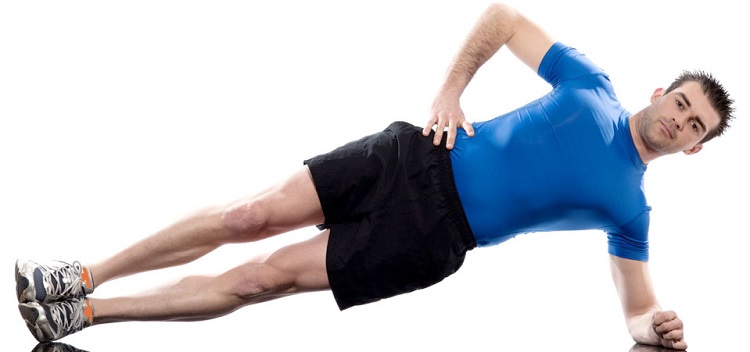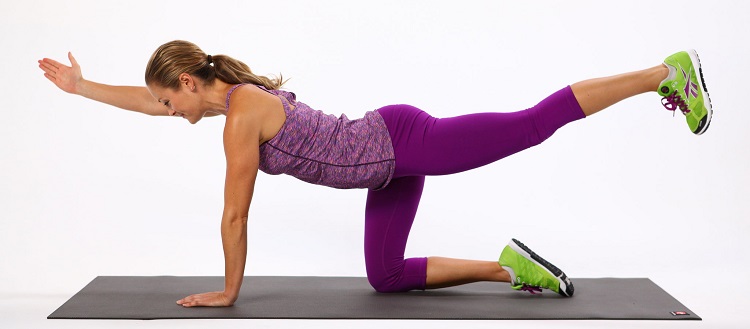Improving core strength for sailing fitness
We’re going to look at improving core strength as the second part of our fitness series. To start, let's answer the obvious question: what’s your core? It is essentially the mid-section of the body and comprises of the deep and superficial muscles like your abdominal muscles, back muscles, and the muscles around the pelvis.
Harvard Medical School breaks down the importance of your core muscles pretty well:
“Think of your core muscles as the sturdy central link in a chain connecting your upper and lower body. Whether you're hitting a tennis ball” (grinding a winch) “or mopping the floor,” (scrubbing the deck) “ the necessary motions either originate in your core, or move through it."

"No matter where motion starts, it ripples upward and downward to adjoining links of the chain. Thus, weak or inflexible core muscles can impair how well your arms and legs function. And that saps power from many of the moves you make. Properly building up your core cranks up the power. A strong core also enhances balance and stability.” This second paragraph illustrates the importance to sailing: poor core strength saps power from many of the moves that you make and a strong core enhances balance and stability.
Harvard also points out that lower back pain may be prevented by exercises that promote well-balanced, resilient core muscles. In 2006, the British Journal of Sports Medicine published an article that reviewed 163 different pieces of literature pertaining to sailing and sports medicine -- back pain was a common ailment across nearly every type of sailing. Anyone that’s had a back injury can tell you that it’s pretty miserable and makes just about everything in your daily life painful and difficult. And holy crap, if you sneeze…
Anyways, one of the better things about core strengthening exercises is that you don’t need much in the way of equipment - many of the best options can be done at home with just your body weight and the floor. As with any anything where you’re working on building up strength, you want to start slowly. Also of importance with core exercises is making sure that you focus on good form as much as anything else -- it is absolutely better to do less reps correctly than more reps with slight deviations from good form. The latter will not only rob you of results but could result in injury.
The classic core strengthening exercise is a floor plank. It’s kind of a “gateway” exercise -- once you’ve mastered it, you can start to add in progressions or stability variations to take it the next level. We’ve copied descriptions from Runners World here, but there’s more descriptions and videos online of planks than you can shake as stick at.
Prone Plank
Lay on the floor on your stomach. Lift your body off the ground, supporting your upper body with your elbows directly under your shoulders and your forearms flat on the ground. Keep your body in a straight line from your shoulders to your heels and hold for 30 seconds. Work up to holding for 60 seconds or longer.
Level it up: if you have access to a stability ball, balance your elbows on the ball to provide an extra challenge to your stability system.

Side Plank
Lie on your left side with your legs, hips, and shoulders in a straight line. Prop yourself up on your left forearm so your elbow is directly under your shoulder. Lift your hips off the floor to create a straight line running from your right shoulder down to your right ankle. Place your top arm along your side. Hold the position for 30 seconds, then lower your hip to the ground. Switch sides and repeat. Work up to holding for 60 seconds or longer.
Level it up: perform the exercise by holding yourself up on your hand instead of your elbow. That getting easy? Lift your top leg up a bit.

Quadruped Opposite Arm/Leg
Try this if you’re looking for a slight variation from the plank that puts a little less pressure on your elbow/forearms. In a quadruped position (on all fours); keep head straight with knees bent to 90 degrees. Engage your core to keep back straight during entire exercise and use your hamstrings, glutes, and low back muscles to lift your leg straight while simultaneously lifting opposite arm. Repeat 10 times each side.

Highly Recommended Reading
The most complete resource for understanding what your core is with pages of exercises for all strength levels is this reference from Princeton University. It provides instruction for flexibility and three levels of core exercises -- it is a fantastic guide that can be easily printed out and should be a go-to resource for anyone that is looking to work on their core strength.




